As I wrote last week, we wrapped up level excavations in Unit 4 and 6 and had just a few loose ends (final scraping and mapping of floor, etc.) in Unit 5. Today's goals were to finish the level excavations in Unit 5 and document the walls of the block by photographing and making profile drawings. I took my own notes on the sediments in the profiles and collected a charcoal sample from one of the probable features exposed in the floor of Unit 4. The block was crowded.
Drawing a profile uses many of the same skills the students learned while piece-plotting artifacts and making horizontal maps. The big difference is that one of the dimensions is elevation. The traditional way of drawing a profile is to establish a level line along the plane that you're drawing, measuring in everything in relation to that line. Setting a level line is simply a matter of stretching a string tightly between two anchoring points (typically gutter spikes or chaining pins), using a simple mason's line level to make the string level.
Finally, I was happy to get a group photo with everyone in it. Good job, 2017 Broad River Archaeological Field School!
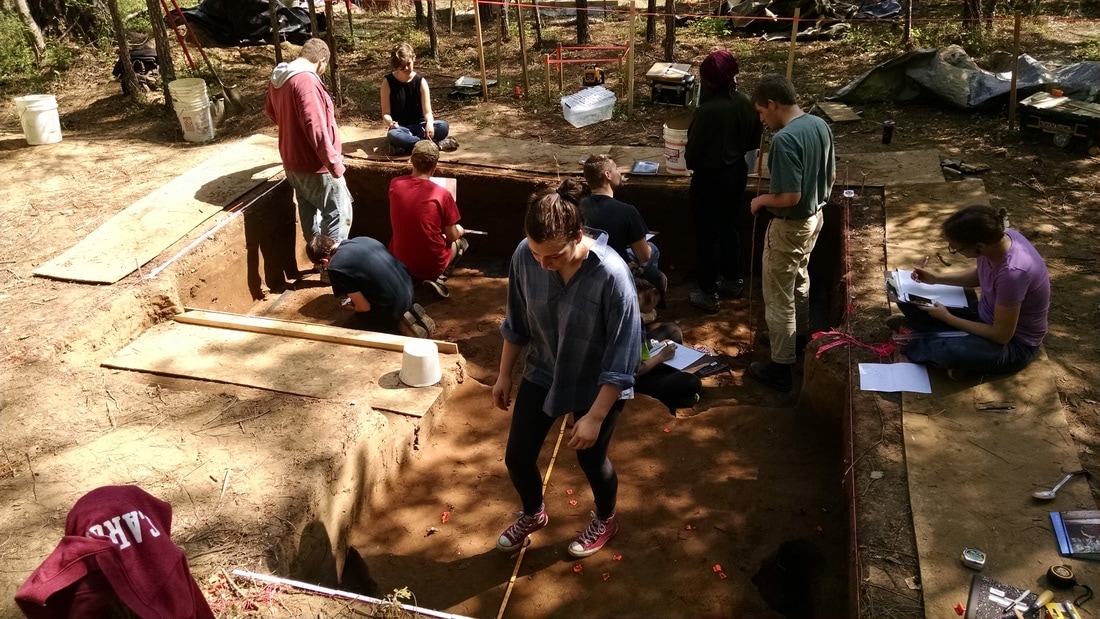
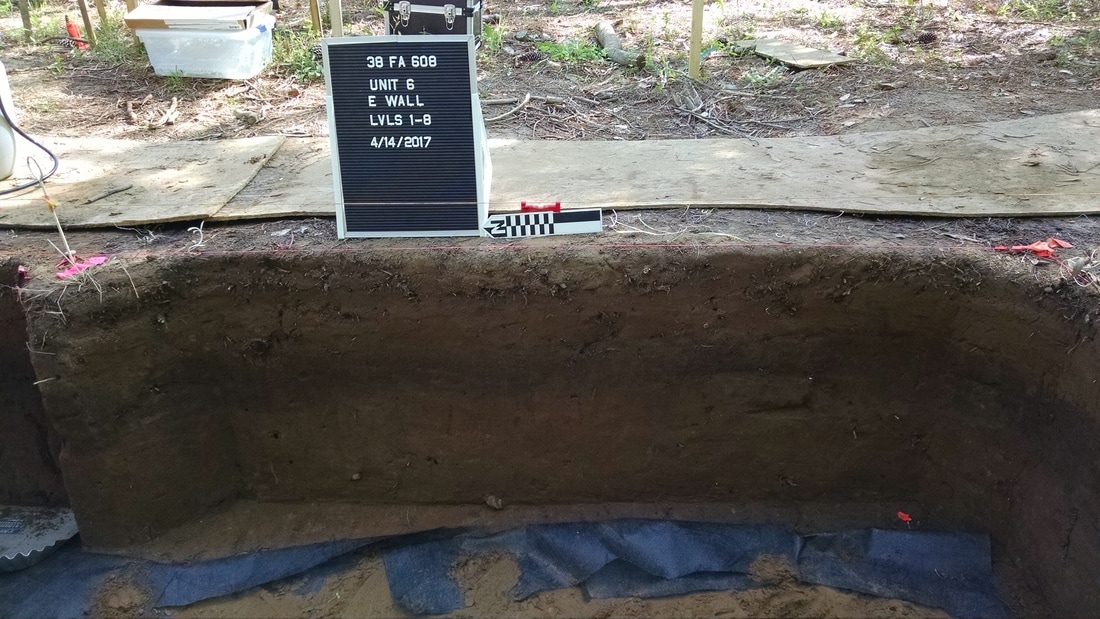
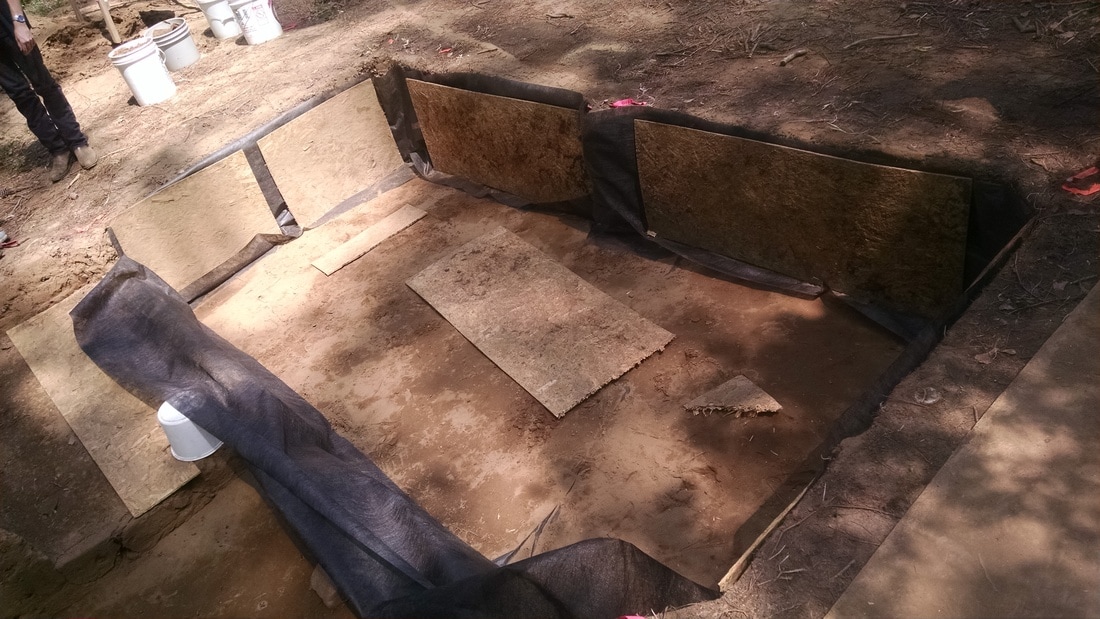
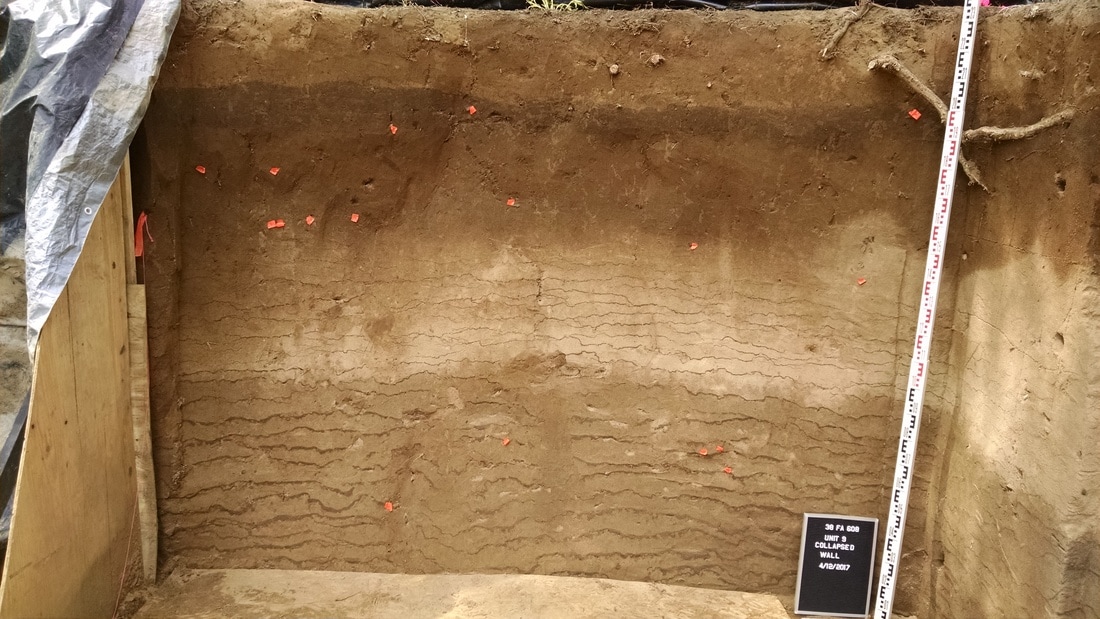
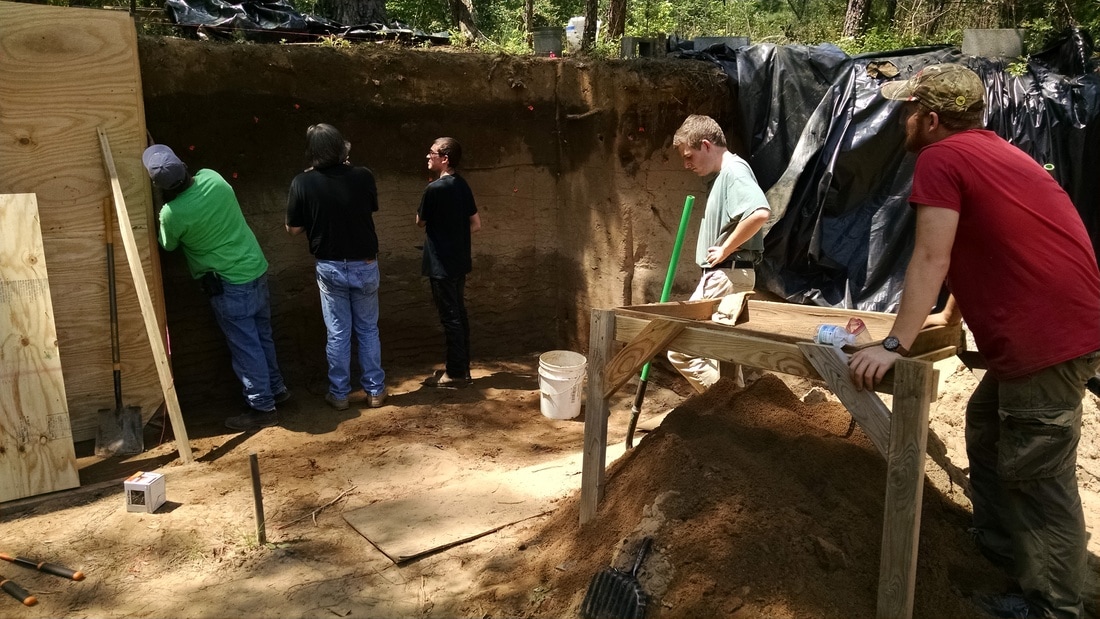
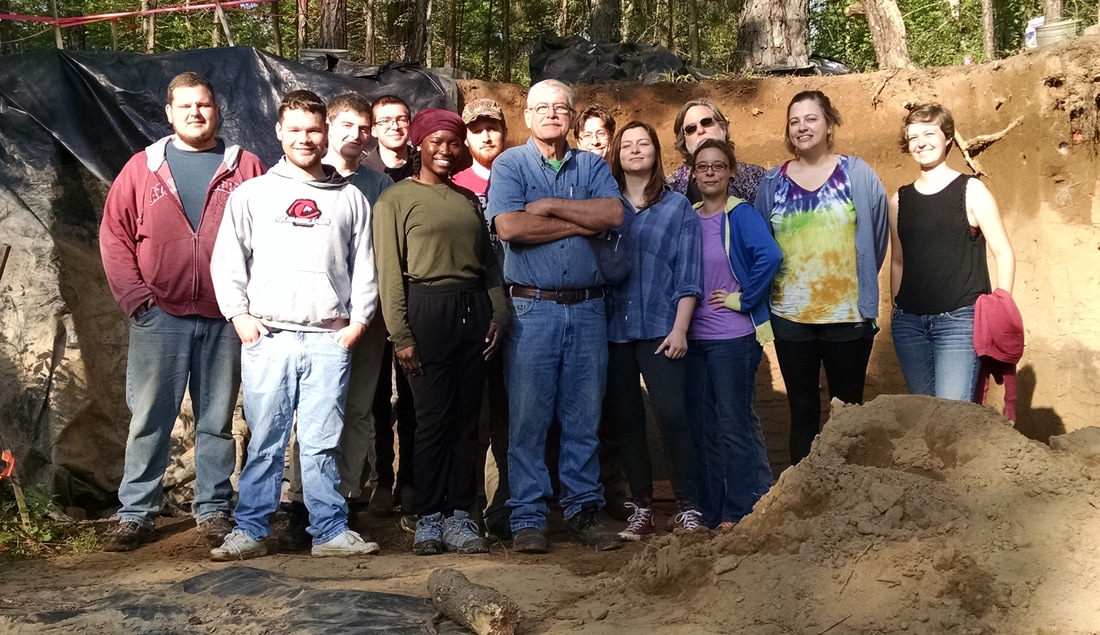


 RSS Feed
RSS Feed
